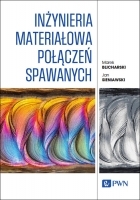Bariery techniczne ewolucji sterowanej przez dobór naturalny
Technological obstacles of the evolution driven by natural selection
Mechanik nr 03/2015 - Artykuły z III Konferencji Naukowo-Technicznej „Obrabiarki sterowane numerycznie i programowanie operacji w technikach wytwarzania” zamieszczone na płycie CD
STRESZCZENIE: W artykule omówiono niektóre problemy techniczne, jakie pojawiałyby się w trakcje realizacji procesu ewolucji biologicznej sterowanej przez przypadkowe mutacje i dobór naturalny. Podane przykłady dotyczą ewolucji aparatu wizyjnego od plamki światłoczułej do oka kręgowca, przekształcenia łuski gada w pióro ptaka oraz wydłużenia szyi żyrafy. W połączeniu z niemożnością techniczną nawet celowego ożywienia materii nieżywej, bariery te wskazują na niemożliwość zachodzenia procesu ewolucji biologicznej, prowadzącej do powstania życia i jego samoczynnego rozwoju od form „prostych” do bardziej złożonych.
SŁOWA KLUCZOWE: ewolucja biologiczna, powstanie życia, dobór naturalny.
ABSTRACT: In the article, there are presented some technical problems that would appear during biological evolution driven by random mutations and natural selection. The examples concern with evolution of the visual apparatus from a light-sensitive point to the fully developed vertebrate eye, transformation of the reptile scale into the bird’s feather, and the elongation of the giraffe’s neck. Taking into consideration technological impossibility of making non-living matter to live, even intentionally, those obstacles indicate that the process of biological evolution with appearance of life by chance and its emergence into various forms from one or few primordial ancestors is virtually impossible.
KEYWORDS: biological evolution, origins of life, natural selection.
BIBLIOGRAFIA / BIBLIOGRAPHY:
- Hawking S.W.: The Beginning of Time. http://www.hawking.org.uk/the-beginning-of-time.html
- Wyrażanie niepewności pomiaru – przewodnik (Guide to the Expression of Uncertainty in Measurement), Główny Urząd Miar, Warszawa 1999.
- Finkelstein L.: Widely-defined measurement – An analysis of challenges, „Measurement” Vol. 42, 2009, s. 1270–1277.
- Adamczak S. et al.: Qualitative and quantitative evaluation of the accuracy of the V-block method of cylindricity measurements, „Precision Engineering” 34 (2010), s. 619-626.
- Farey J.: A Treatise on the Steam Engine, Historical, Practical, and Descriptive, Longman, London 1827.
- Stuart R.: Historical and descriptive anecdotes of steam-engines, and of their inventors and improvers, Volume 1, Wightman&Cramp, London 1829.
- Sysło M. M.: Piramidy, szyszki i inne konstrukcje algorytmiczne, Wydawnictwa Szkolne i Pedagogiczne, Warszawa 1998.
- Piramidy z Gizy, http://technologiamaszynowa.blogspot.com/2013/06/piramidy-z-giza-brama-do-innej.html
- Gusin P.: Entropia Wszechświata, „Postępy fizyki” t. 61, z. 6 (2010), s. 222-228.
- Penrose R.: The Road to Reality. A Complete Guide to the Law of the Physics, Jonathan Cape, London 2004.
- Penrose R.: The Road to Reality. A Complete Guide to the Law of the Physics, Jonathan Cape, London 2004.
- Biologia. Encyklopedia szkolna WSiP, WSiP, Warszawa 2005.
- Schopf J.W. et al.: Evidence of Archean life: Stromatolites and microfossils „Precambrian Research” 158 (2007), s. 141-155.
- Bell-Pedersen D.: Understanding Circadian Rhythmicity in Neurospora crassa: From Behavior to Genes and Back Again, „Fungal Genetics and Biology” 29 (2000), s. 1-18.
- Mori T., Johnson C.H.: Circadian programming in cyanobacteria, „Cell & Developmental Biology” 12 (2001), s. 271-278.
- Russell W. E.: It’s About Time: Clock Genes Unveiled in the Gut, „Gastroenterology” Vol. 133, No. 4 (2007), s. 1373-1376.
- Dawkins R.: Climbing Mount Improbable, Penguin Group, 1996.
- Lönnig W. E.: The Evolution of the Long-Necked Giraffe (Giraffa camelopardalis L.) – What Do We Really Know? www.internetlibrary.html
- “photoreception”. Encyclopædia Britannica Online. Encyclopædia Britannica Inc., 2014. http://www.britannica.com/EBchecked/topic/458127/photoreception
- Behe M.J., Molecular Machines: Experimental Support for the Design Inference, Access Research Network, http://www.arn.org/docs/behe/mb_mm92496.htm
- Parker A. R.: On the origin of optics, „Optics & Laser Technology” 43 (2011), s. 323-329.
- Nilsson D.-E., Pelger S.: A pessimistic estimate of the time required for an eye to evolve „Proceedings of Royal Society: Biological sciences”, Vol. 256, nr 1345 (1994), s. 53-58.
- Durrett R., Schmidt D.: Waiting for Two Mutations: With Applications to Regulatory Sequence Evolution and the Limits of Darwinian Evolution, „Genetics” Vol. 180, nr 3 (2008), s. 1501-1509.
- Heers A. M., Dial K. P.: From extant to extinct: locomotor ontogeny and the evolution of avian flight, „Trends in Ecology and Evolution” Vol. 27, nr 5 (2012), s. 296-305.
- “feather”. Encyclopædia Britannica Online. Encyclopædia Britannica Inc., 2014. http://www.britannica.com/EBchecked/topic/203162/feather.
- Clarke J., Middleton K.: Bird Evolution, „Current Biology” Vol. 16, nr 10 (2006), s. R350-R354.
- Barnard G. et. al.: Origins: Examining the Evidence. St Neots, Cambridgeshire 2011.
- Bonser R.H.C. et al.: Toughness anisotropy in feather keratin, „Journal of Materials Science” 39 (2004), s. 2895-2896.
- McIntosh A. C.: The intricacies of flight in the natural world, w: In six days, ed. by Ashton J., New Holland, 1999.
- Babinsky H.: How do wings work? „Physics Education” Vol. 38, nr 6 (2003), s. 497-503.
- Abbott I. H., von Doenhoff A. E.: Theory of Wing Sections, Dover Publications Inc., New York 1959.
- Sachs G.: Tail effects on yaw stability in birds, „Journal of Theoretical Biology” 249 (2007), s. 464-472.





















